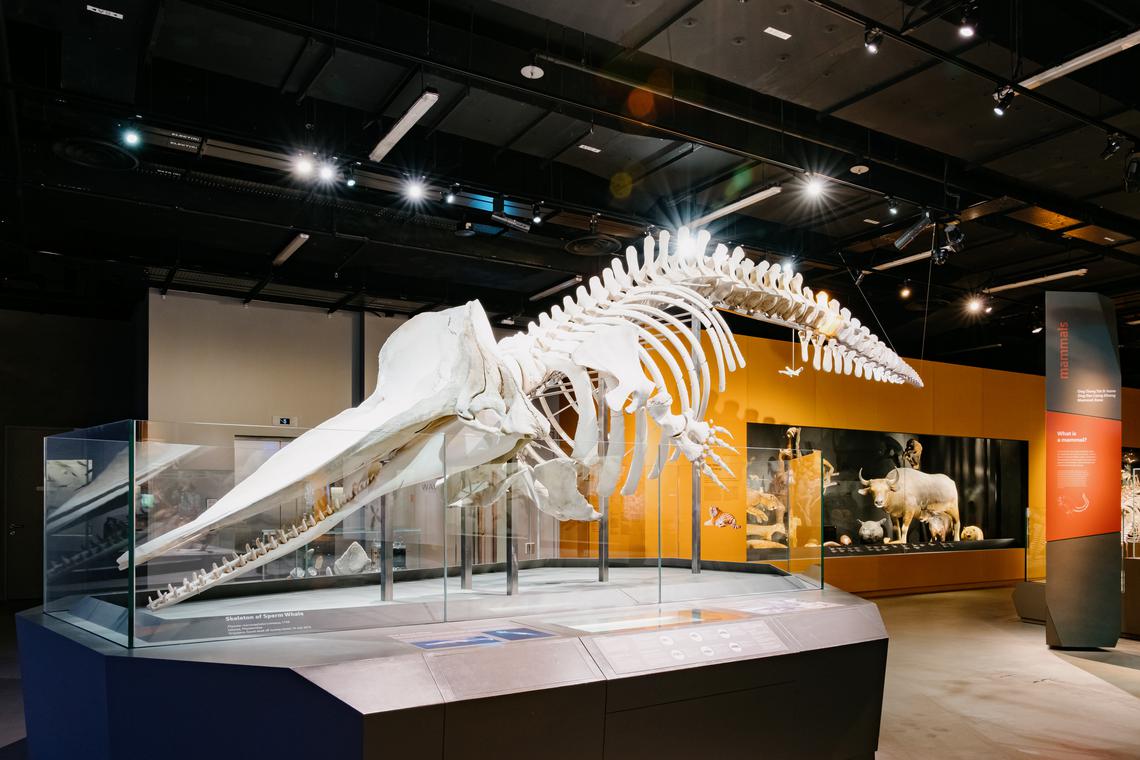SINGAPORE – The Lee Kong Chian Natural History Museum welcomed a record number of visitors – 88,200 – in 2024. But the facility, which averages 65,000 visitors a year and is part of the National University of Singapore, looks set to exceed that number in 2025 as it hosts a series of events to mark its 10th anniversary.
The Republic’s only natural history museum, which was launched on April 18, 2015, will have an open house on May 18, where the first 600 visitors enter for free. Entry for an individual adult typically costs $18 for Singaporeans and $27 for non-Singaporeans.
Adults can look forward to complimentary guided tours then, while children can take part in activities like scavenger hunts and educational games.
A new pop-up planetarium, which seats up to 15 people, will feature at the event. A Journey Through Singapore’s Natural History, a 15-minute in-house production by the museum, will be projected onto its concave screen for all to enjoy.
Ms Jharyathri Thiagarajah, the museum’s lead education officer, said: “The original feature will showcase deep-sea expeditions, species discoveries and international research collaborations.”
An exhibition named A Decade of Discovery: Stories from the Lee Kong Chian Natural History Museum will run from May 7, 2025, to May 3, 2026. It will showcase collections dating back to the 1840s and outline the museum’s present-day role in preserving and showcasing the region’s natural heritage.
Those keen on a more entertaining experience can sign up to enjoy a Night at the Museum from May 30 to June 6, where they can roam around the museum after its regular opening hours. A heist-themed palaeontology adventure will take place from 7pm to 10pm, where visitors can play the role of a detective and solve a mystery of stolen dinosaur fossils.

The museum will have an open house on May 18, when the first 600 visitors enter for free.PHOTO: LEE KONG CHIAN NATURAL HISTORY MUSEUM
The festivities will conclude with the museum’s first public research symposium on Sept 6. It will bring together researchers and ordinary citizens to discuss the role of natural history museums in shaping research and conservation.
Sign-ups for the Night at the Museum and research symposium events open on April 18. Those interested can find out more about the museum’s events at its website.
A bastion for biodiversity research
Before 2015, natural history in Singapore was studied at the National Museum and Raffles Museum of Biodiversity Research. The Lee Kong Chian Natural History Museum’s earliest predecessor was the Raffles Library and Museum, which became a public institution in 1878.
Today, the museum houses more than a million zoological specimens, an increase from approximately 500,000 at its inception in 2015, the museum’s deputy head, Associate Professor Huang Danwei, told The Straits Times.
Prof Huang said: “By examining and comparing specimens in the Zoological Reference Collection, the museum has helped to advance local conservation and scientific research.
“These specimens serve as historical snapshots of species and ecosystems, allowing researchers to track changes in species distributions, population dynamics, and ecological shifts over time.”
Many of these samples are obtained through local and regional field surveys, such as the Comprehensive Marine Biodiversity Survey, which ran from 2010 to 2015, and sought to catalogue Singapore’s marine biodiversity.

The museum houses more than a million zoological specimens, some of which are preserved in alcohol or formulin.PHOTO: LEE KONG CHIAN NATURAL HISTORY MUSEUM
The museum has also been instrumental in identifying novel wildlife across Singapore. For instance, the saddle barb (Barbodes sellifer), a freshwater fish native to the Malay Peninsula, was discovered in Nee Soon Swamp Forest in 2021, and was described by the museum’s researchers as a new species to science.
Its scientists played a key role in editing the third edition of the Singapore Red Data Book, which compiles critical information on Singapore’s flora and fauna, such as their local and international conservation status.
Associate Professor Darren Yeo, the head of the museum, said: “By providing an up-to-date assessment of the nation’s biodiversity, this book will serve as a vital resource for future conservation initiatives.”
Outreach and education
The museum’s Aspiring Naturalist Programme, which was launched in 2022, offers young people a chance to experience various fields in science, such as entomology, ornithology and mammal conservation.
To date, it has engaged more than 100,000 students via this and other educational programmes, including its evolution workshop for tertiary-level students.
When asked what the next decade holds for the museum, its team says that it plans to expand – both physically and in its research and outreach capabilities.
Upgrades to its facilities and systems are on the cards.
“This will enable more robust comparative analyses, helping researchers identify new species, track environmental changes, and inform conservation efforts more effectively,” Prof Huang said.
Additional exhibition spaces to enhance public engagement will also allow the museum to showcase South-east Asia’s flora and fauna in more effective and diverse ways, Prof Yeo said.
While taxonomy, or the classification of living and extinct organisms, will remain at the heart of the museum’s research, Prof Yeo emphasised its desire to explore new frontiers of science, such as artificial intelligence.
It will also seek to deepen collaborations with fellow Asean researchers, he said. As a research hub for South-east Asian biodiversity, it will seek to further partnerships with regional universities and institutes to create opportunities, especially for early-career scientists.
Prof Yeo said: “Through research and education, we seek to inspire students and the public, cultivating a deeper appreciation for biodiversity and environmental issues.
“Ultimately, we strive to ensure that biodiversity remains relevant in the lives of present and future generations.”
Join ST’s WhatsApp Channel and get the latest news and must-reads.

